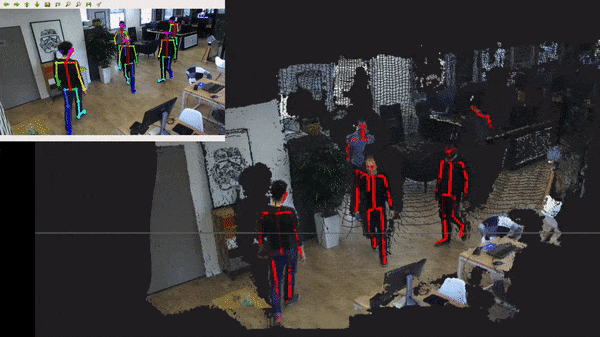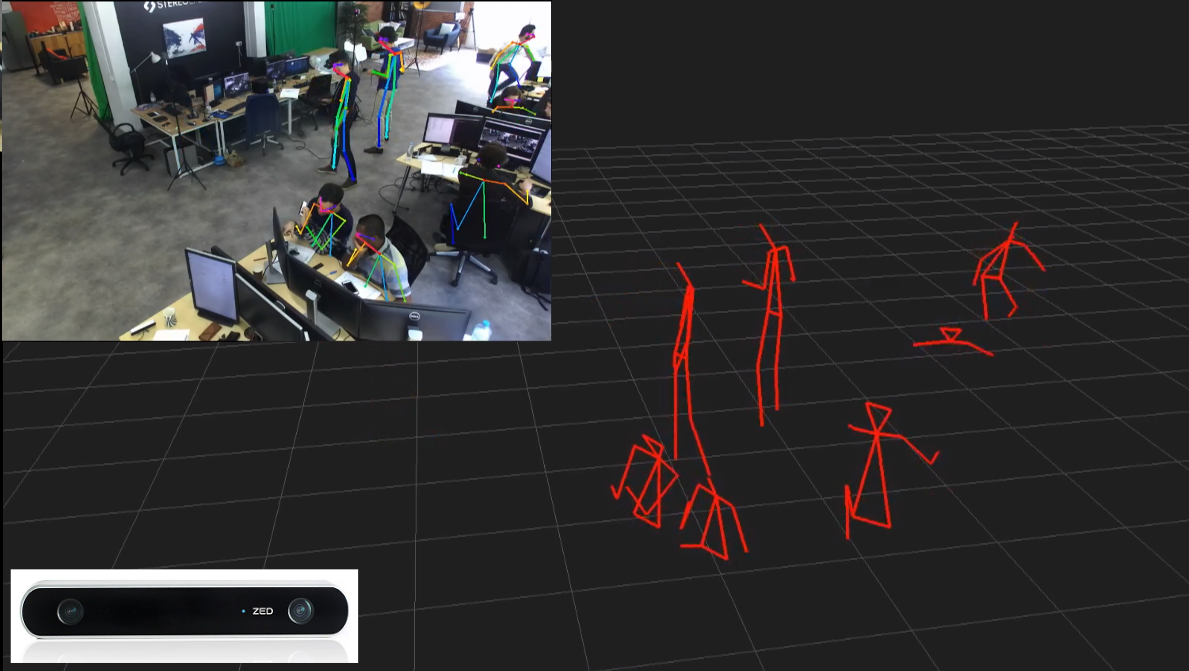This sample show how to simply use the ZED with OpenPose, the deep learning framework that detects the skeleton from a single 2D image. The 3D information provided by the ZED is used to place the joints in space. The output is a 3D view of the skeletons.
This sample can be put in the folder examples/user_code/ OR preferably, compile and install openpose with the cmake and compile this anywhere
The installation process is very easy using cmake.
Clone the repository :
git clone https://github.com/CMU-Perceptual-Computing-Lab/openpose/
Build and install it :
cd openpose
mkdir build
cmake .. # This can take a while
make -j8
sudo make install
The ZED SDK is also a requirement for this sample, download the ZED SDK and follows the instructions.
It requires ZED SDK 3.
Open a terminal in the sample directory and execute the following command:
mkdir build
cd build
cmake ..
make -j8
We then need to make a symbolic link to the models folder to be able to loads it
ln -s ~/path/to/openpose/models "$(pwd)"
A models folder should now be in the build folder
-
Navigate to the build directory and launch the executable
-
Or open a terminal in the build directory and run the sample :
./zed_openpose -net_resolution 656x368
Beyond the openpose option, several more were added, mainly:
| Option | Description |
|---|---|
| svo_path | SVO file path to load instead of opening the ZED |
| ogl_ptcloud | Boolean to show the point cloud in the OpenGL window |
| estimate_floor_plane | Boolean to align the point cloud on the floor plane |
| opencv_display | Enable the 2D View of OpenPose output |
| depth_display | Display the depth map with OpenCV |
Example :
./zed_openpose -net_resolution 320x240 -ogl_ptcloud true -svo_path ~/foo/bar.svo
- This sample is a proof of concept and might not be robust to every situation, especially to detect the floor plane if the environment is cluttered.
- This sample was only tested on Linux but should be easy to run on Windows.
- This sample requires both Openpose and the ZED SDK which are heavily relying on the GPU.
- Only the body keypoints are currently used, however we could imagine doing the same for hand and facial keypoints, though the precision required might be a limiting factor.
If you need assistance go to our Community site at https://community.stereolabs.com/

